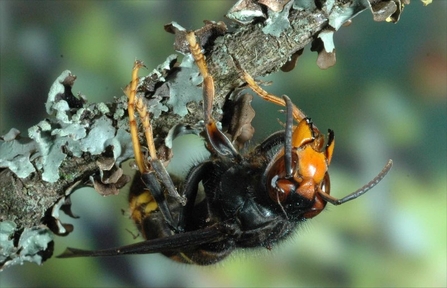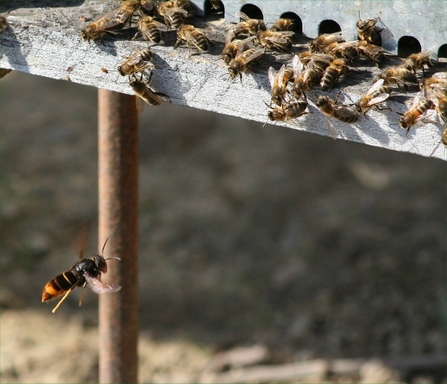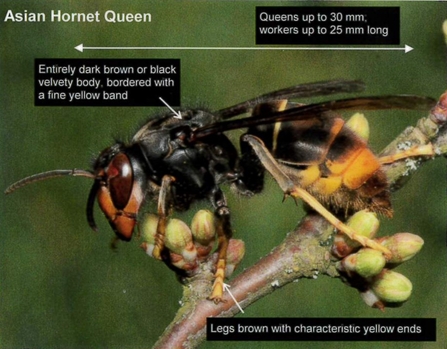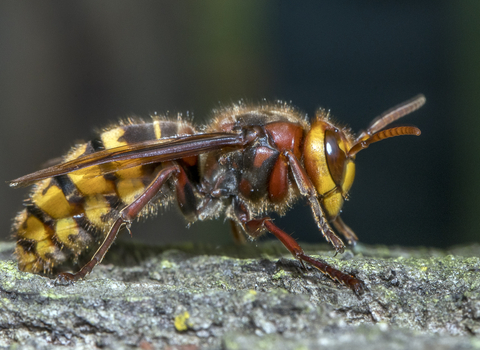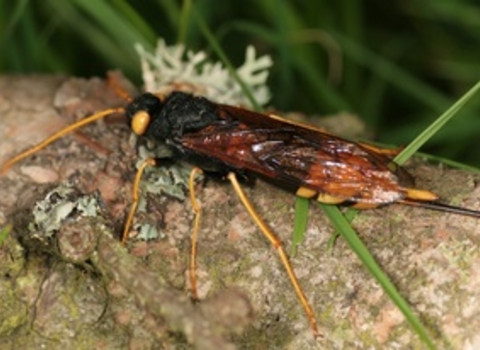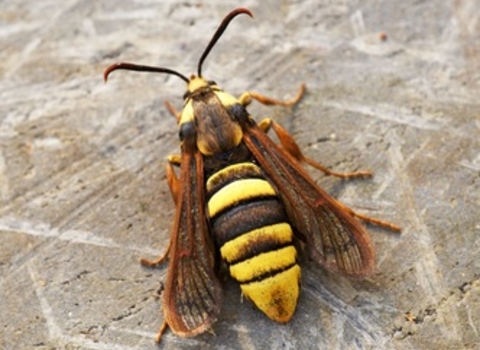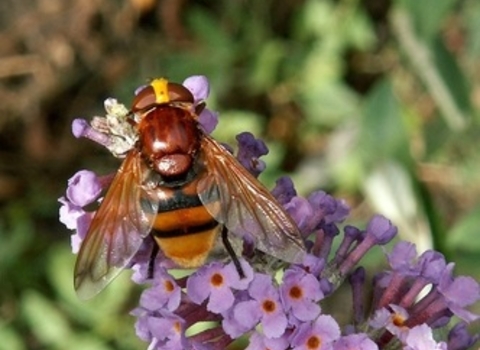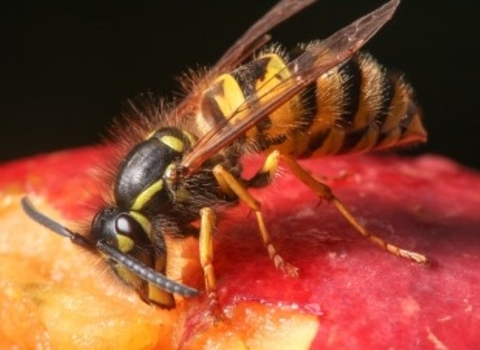The Asian hornet (Vespa velutina) is a predatory wasp native to Asia. Asian hornets are an Alert Species and potential sightings need to be reported as soon as possible to prevent their establishment in GB.
The first sighting of the Asian hornet in GB was confirmed by the National Bee Unit in September 2016 in the Tetbury area of Gloucestershire. There have been 32 Asian hornet nests in 27 locations, primarily along the South Coast of England (as of 1st of September 2023). To keep uptodate with sightings please check the National Bee Unit website.
If you see an Asian hornet, do not attempt to capture them or destroy their nests. Report sightings by using the Asian Hornet Watch app on Android and iPhone or you can report sightings online here.


